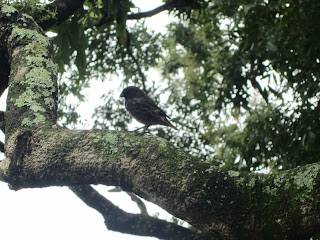(The Galapagos!)
I spent the last six days in the Galapagos. I was amazed by how well the Galapagos National Park Service has done at maintaining the islands in their natural form. While the Galapagos have about one third as much land mass as the state of Hawaii, they have less than one fortieth of the population. As a result of the careful population control, the majority of the land is uninhabited and is preserved in its natural state. Below are some photos and videos that I took while there:
A wild baby sea lion ran right up to us from the water. This was pretty incredible.
One of the many species of tortoises in the Galapagos. Until recently, many of the tortoise species in the Galapagos were nearing extinction (a few are now in fact extinct). The tortoise population declined primarily due to human hunting and non-native introduced species including ants and rats. Tortoise hunting drastically decreased in 1959 when Ecuador made the Galapagos Islands a national park. Nonetheless, the presence of introduced species still poses a serious threat to the tortoise population, making it nearly impossible for young tortoises to survive in the wild. As a result, the national park is currently funding multiple programs to breed tortoises in captivity and release them into the wild once they reach five years old.
A small island of lava rock which serves as a breading ground for iguanas.
Me in front of the crater of the Sierra Negra volcano on Isabela Island. The crater is the largest in the Galapagos, measuring about 60 square kilometers. The volcano last erupted in 2005.
Apparently flamingos are native to the Galapagos. Who knew.
A blue-footed booby.
Some of the penguins that live in the Galapagos. Although located on the Equator, the Galapagos has many animals generally associated with cold climates because of the cool current coming from the south. This cool current meets a warm current coming from the north, thus creating an incredible diversity of marine life around the islands.
No Galapagos blog post would be complete without a picture of one of Darwin's finches. The species shown in this picture is one of the fifteen that inspired Darwin to write his groundbreaking work, On the Origin of Species.










